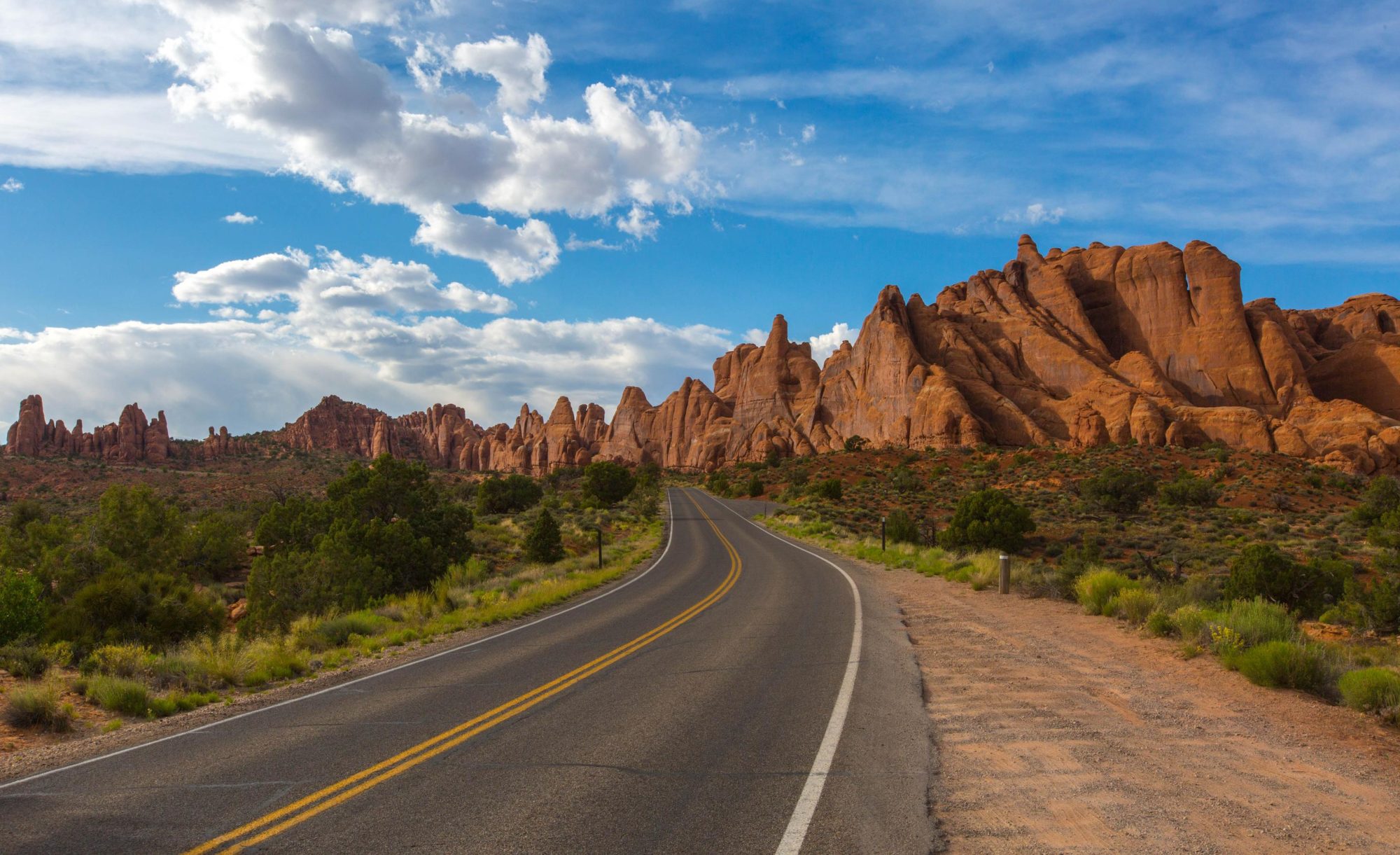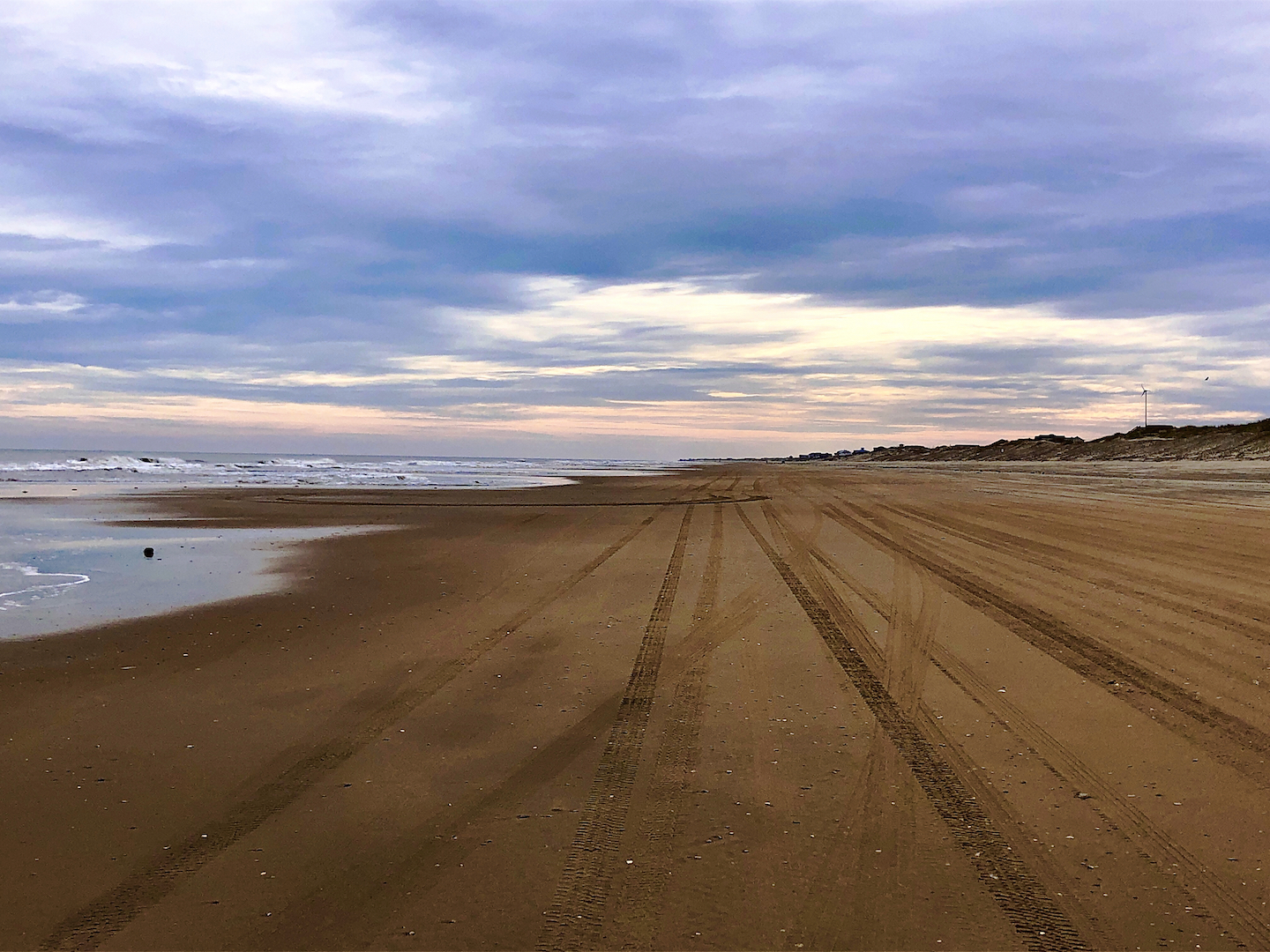I don’t think this post is going to do justice to the Outer Banks of North Carolina. The Outer Banks extend southwards along the coast of North Carolina for 175 miles/280 km and comprises a number of islands made up of mostly sand, rarely more than one mile in width and with some dunes over 100ft/30m in height. Our friend Brian has family who own a beach house on the dunes in Corolla, at the northern tip of this chain of barrier islands, and we were so lucky to be able to stay here for our Outer Banks experience.
There is no sealed road to leading to the beach houses in Corolla. Instead access is by four wheel drive along the beach with sandy roads amongst the houses that have been created over time.
It was dark by the time we arrived in Corolla and as we headed along the beach we could hear and smell the ocean to our right and see it by headlight but, with no streetlights to cause light pollution, it was otherwise pitch black. As Brian pulled up at the house under a sea of stars overhead, we had no idea what our surroundings looked like until the next morning when we saw the view from our deck. Wow. Beach houses spread out along the beach with nothing but sand in between and the ocean on the horizon.
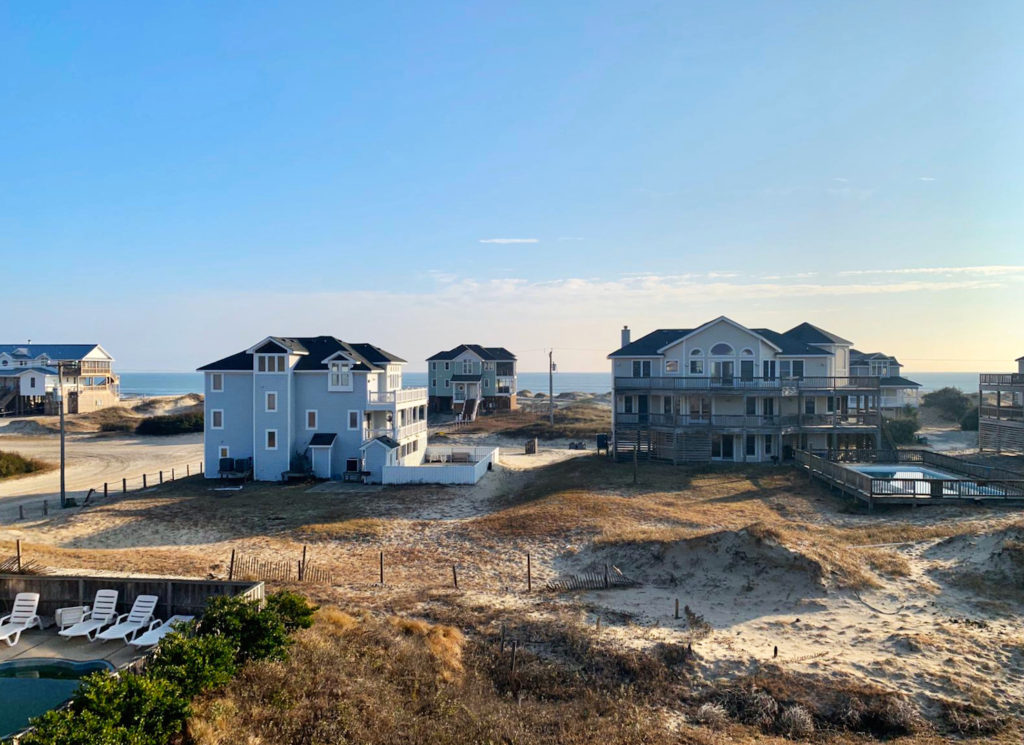
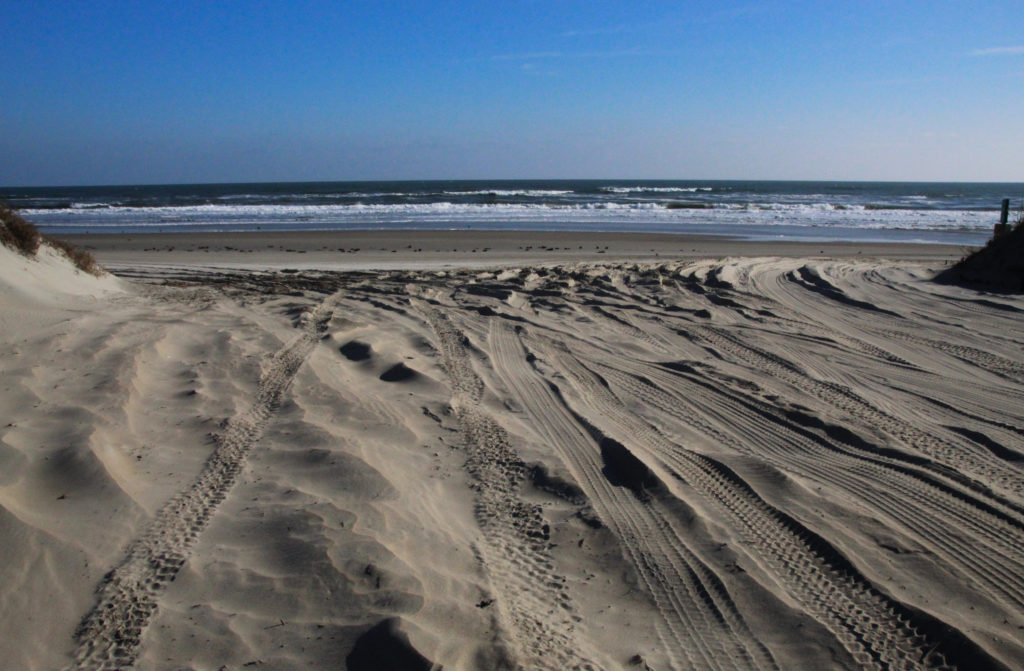
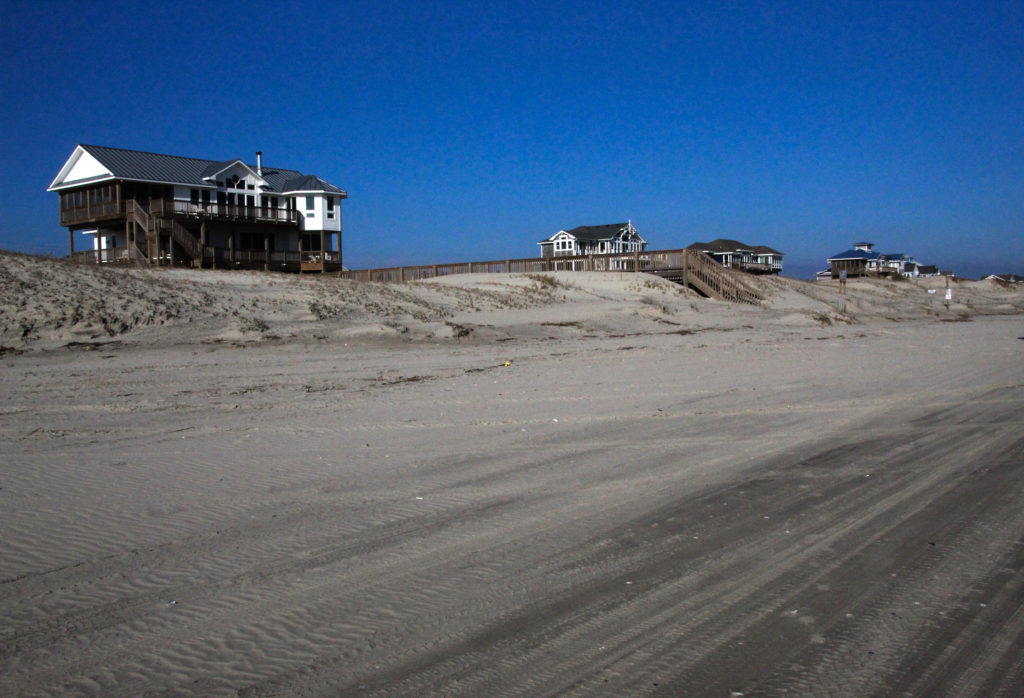
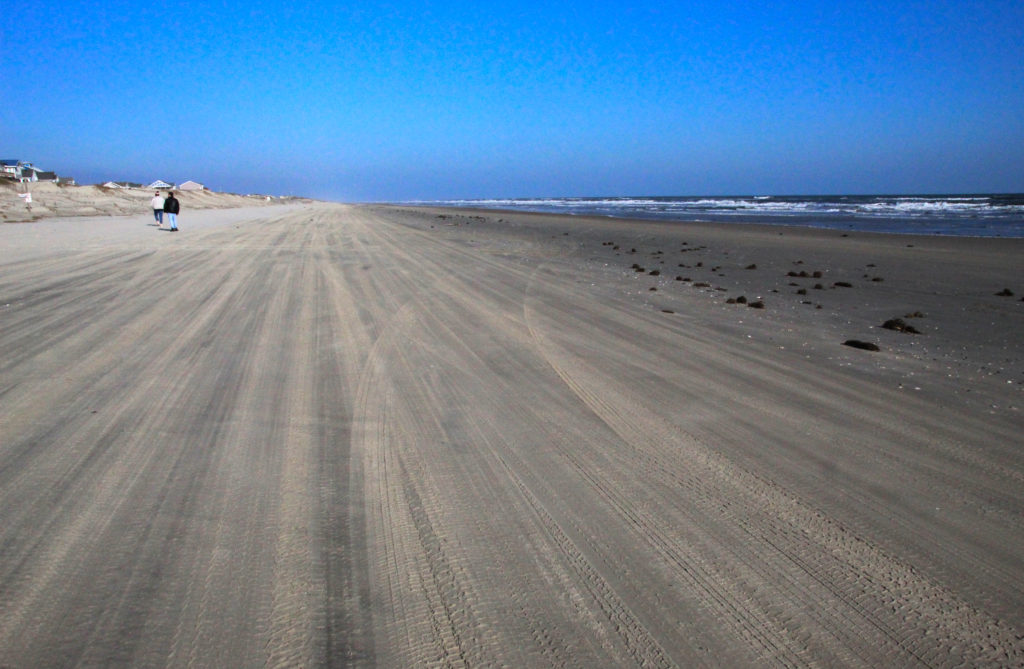
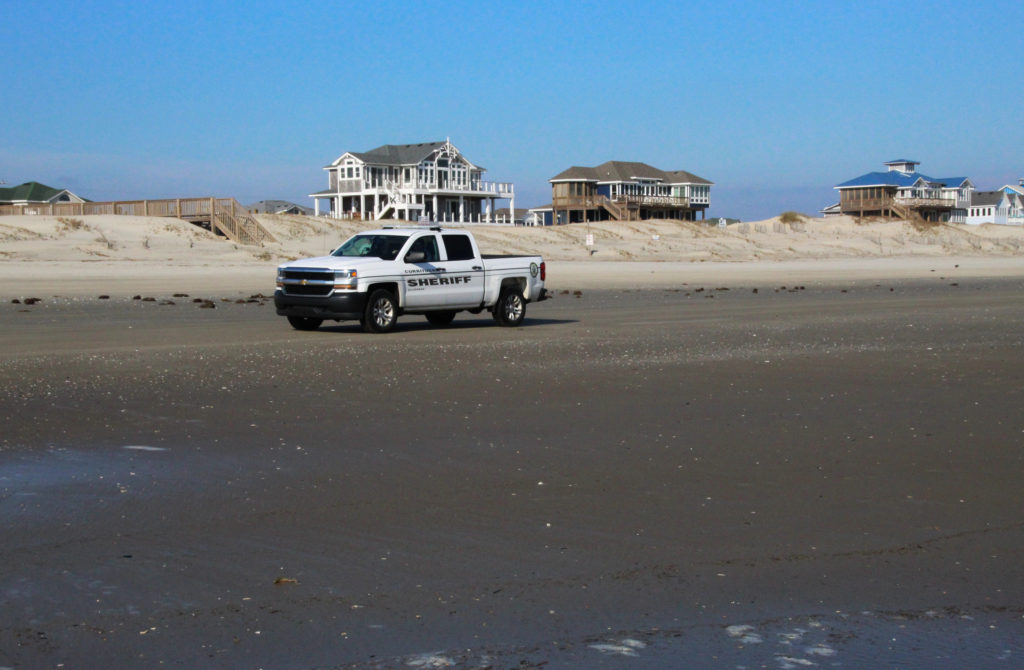
The houses in Corolla come in all shapes and sizes, old and new, from the homes of permanent residents to those kept for summer holiday makers.
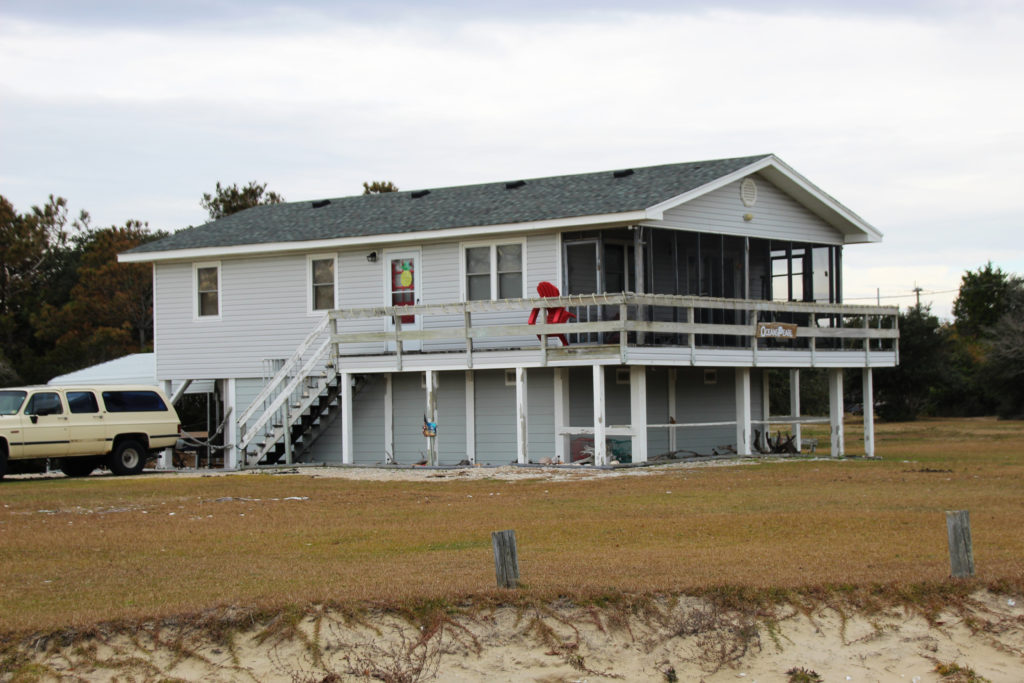
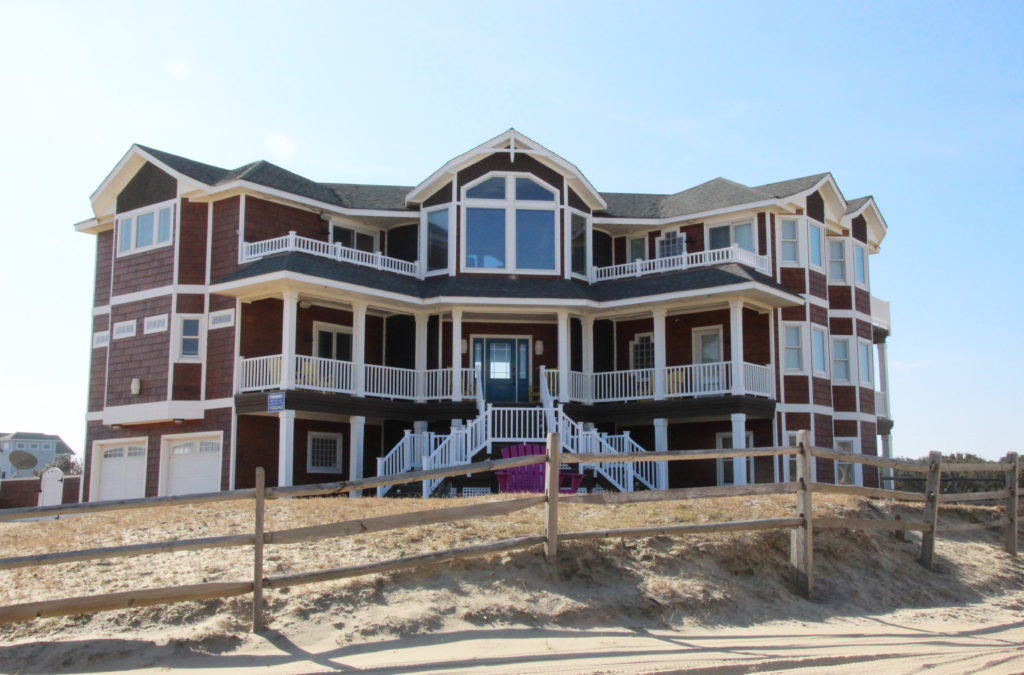
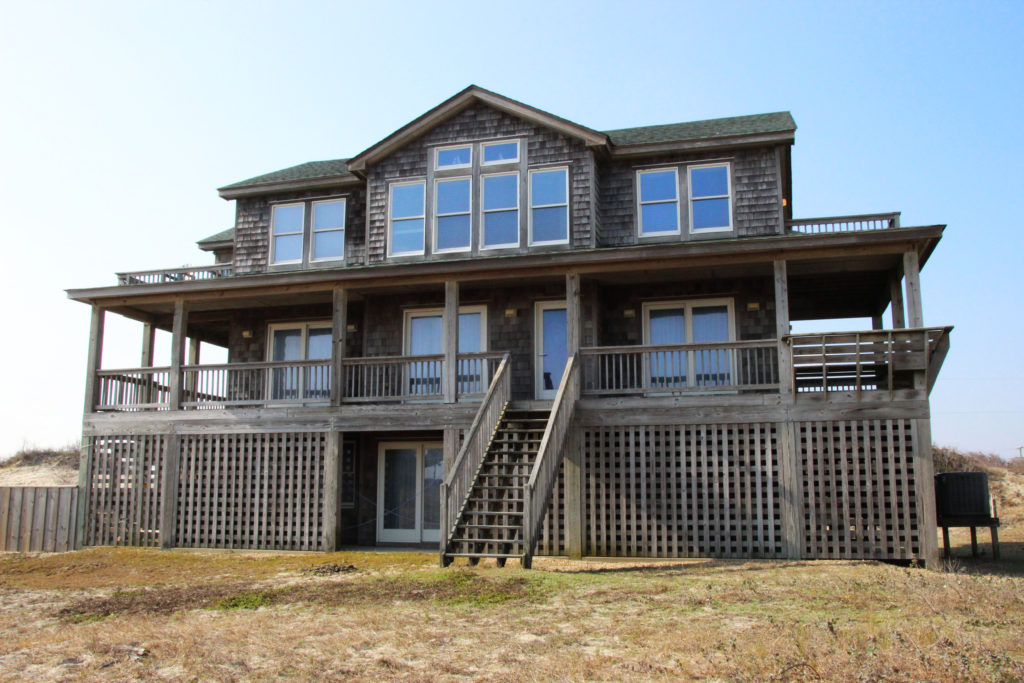
Descended from Spanish Mustangs, the Corolla Wild Horses have roamed this area of the Outer Banks for over 400 years. While it is illegal to intentionally approach them, they can be seen wandering around the houses and along the beach. While in years past there were thousands of horses seen here, there are only 100 or so horses left in the Corolla herd today. They are a source of much pride amongst the people of the Outer Banks and we loved seeing them grazing amongst the houses.

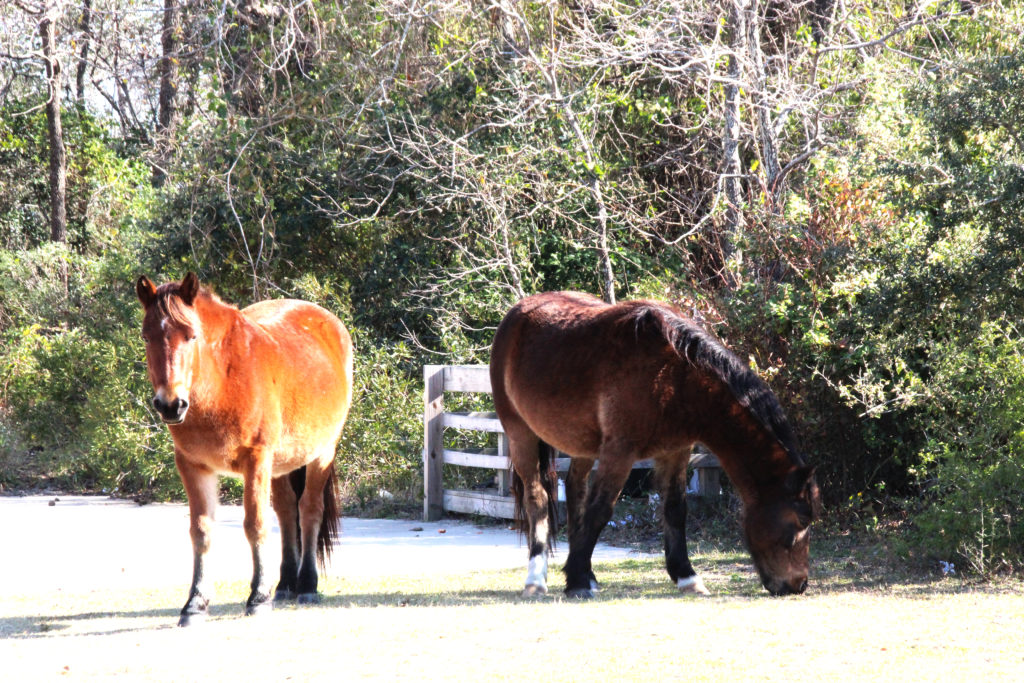
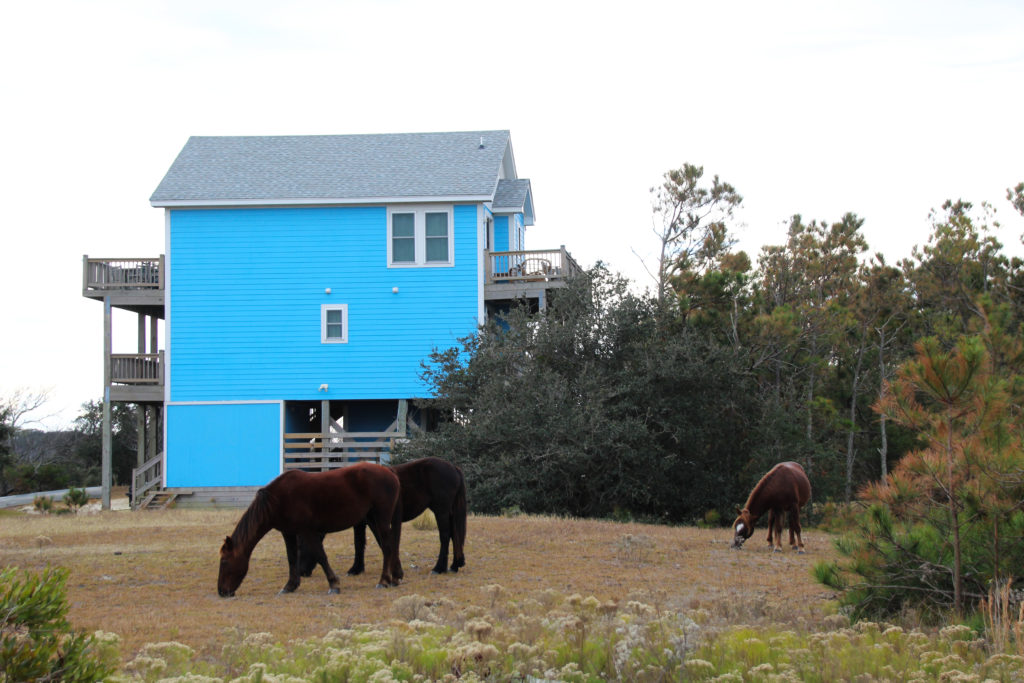
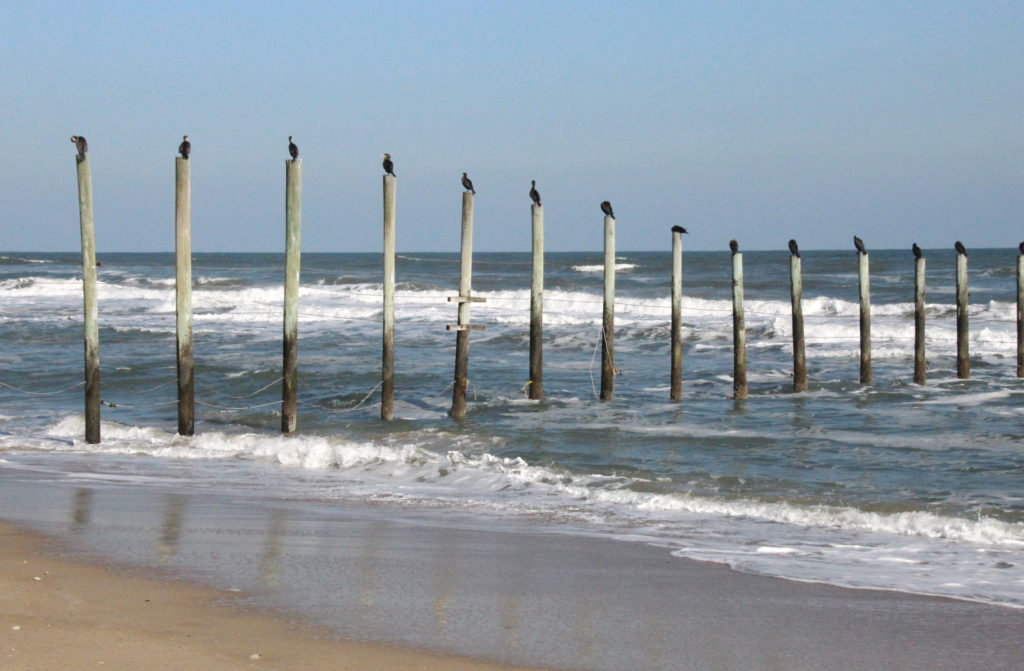
With the sun shining, Brian took us exploring around the Outer Banks beyond Corolla and we fell in love with the area, its sights and its history, making this one of our favourite places we have visited on this road trip. From the monument honouring the Wright brothers to the lighthouses dotted along the coastline, the Outer Banks is rich in history as well as beauty.
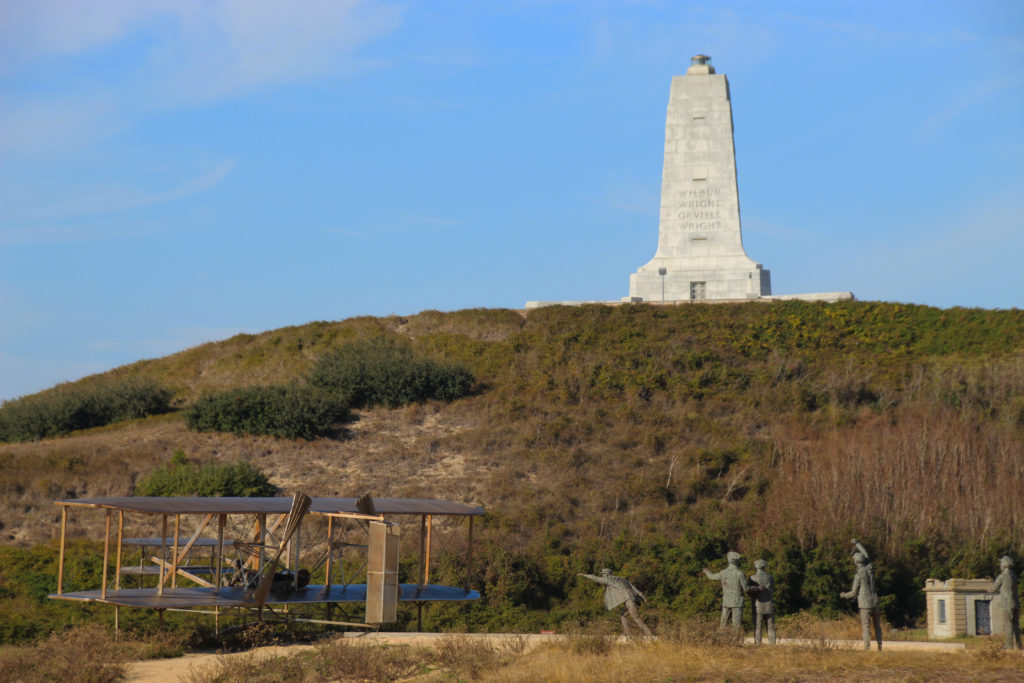
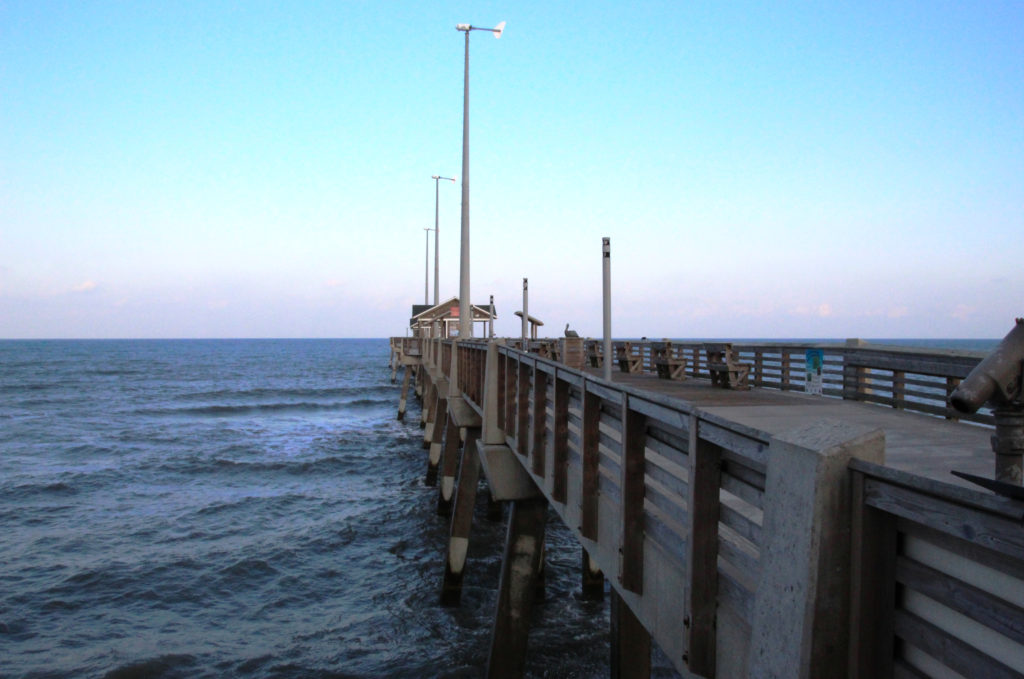
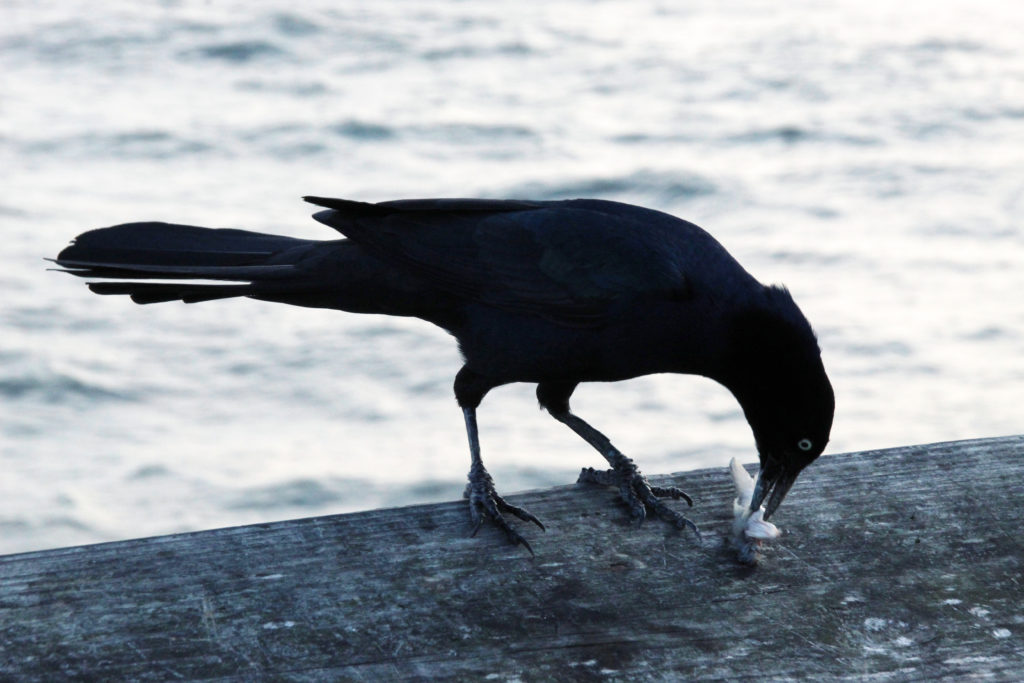
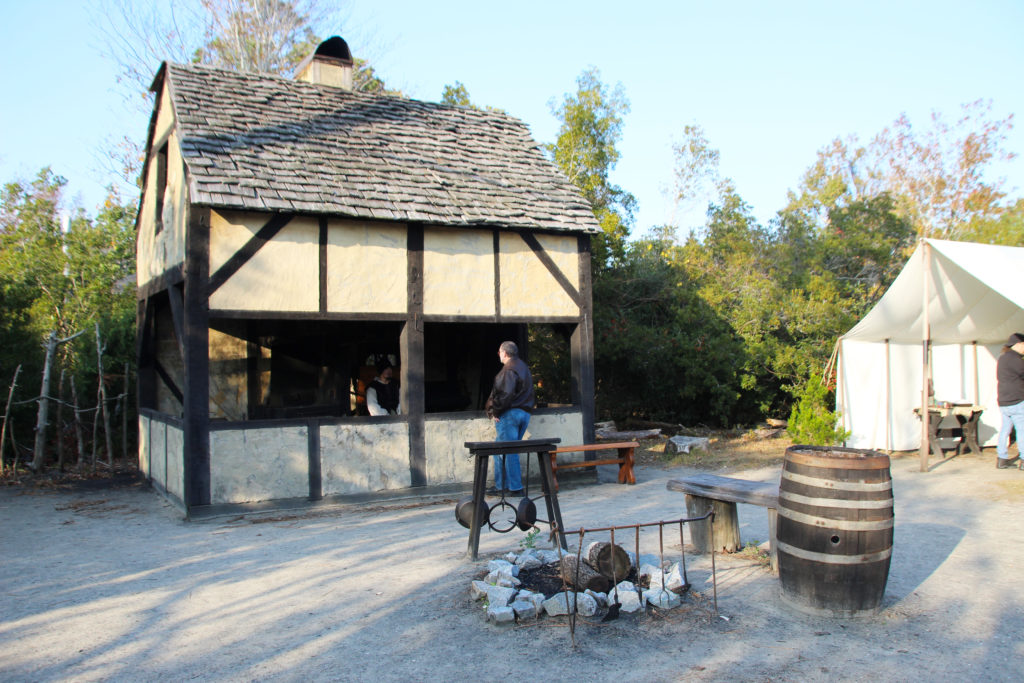
Known as the Graveyard of the Atlantic, the coastline of the Outer Banks is notorious for its treacherous waters and has been the resting place for over 2000 shipwrecks throughout the years. Today the wrecks make for a diving haven and the Outer Banks is home to five lighthouses along the length of the coastline.
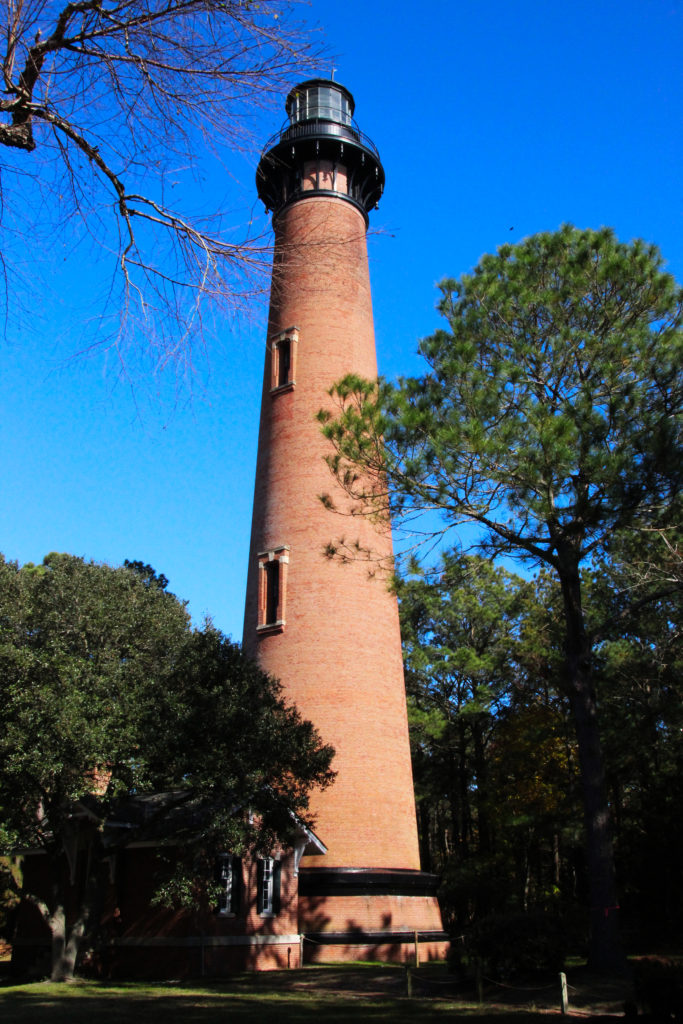
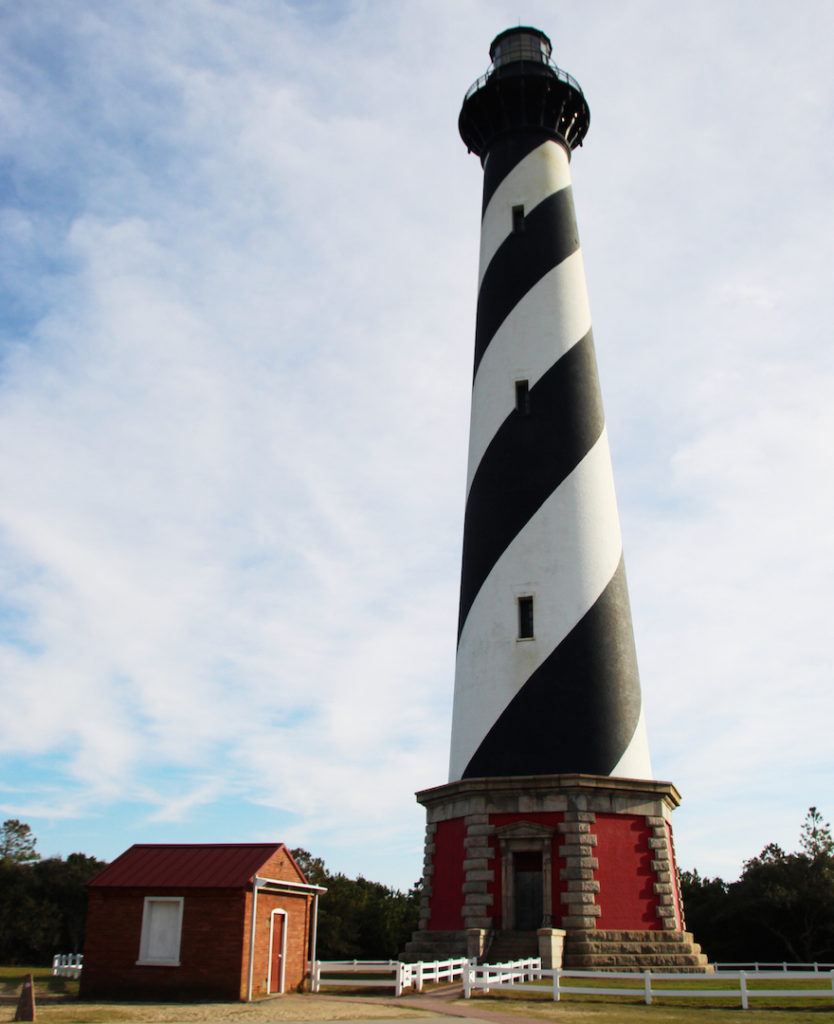
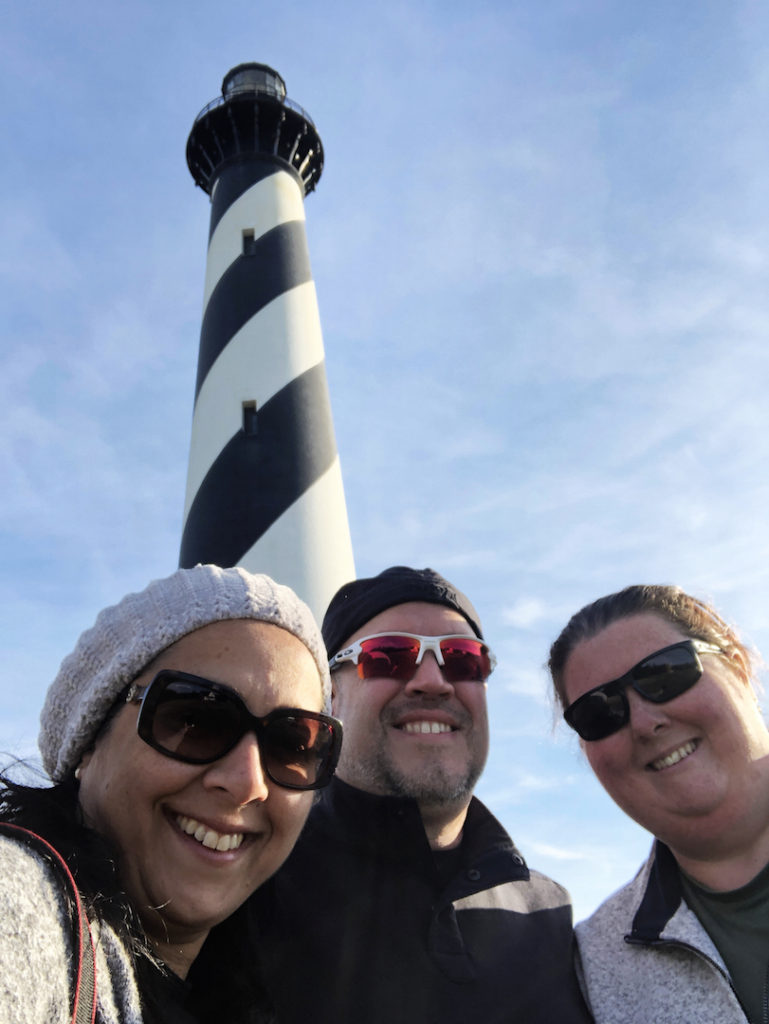
We went to Cape Point, the eastern most beach in the Outer Banks, to watch the fishermen angling for their daily catch. Being situated so close to the Gulf Stream means an abundance of fish including Spanish mackerel, mullet, bluefish and croaker. Never mind the number of fishermen, the array of rods and lines on display was mesmerising 😂
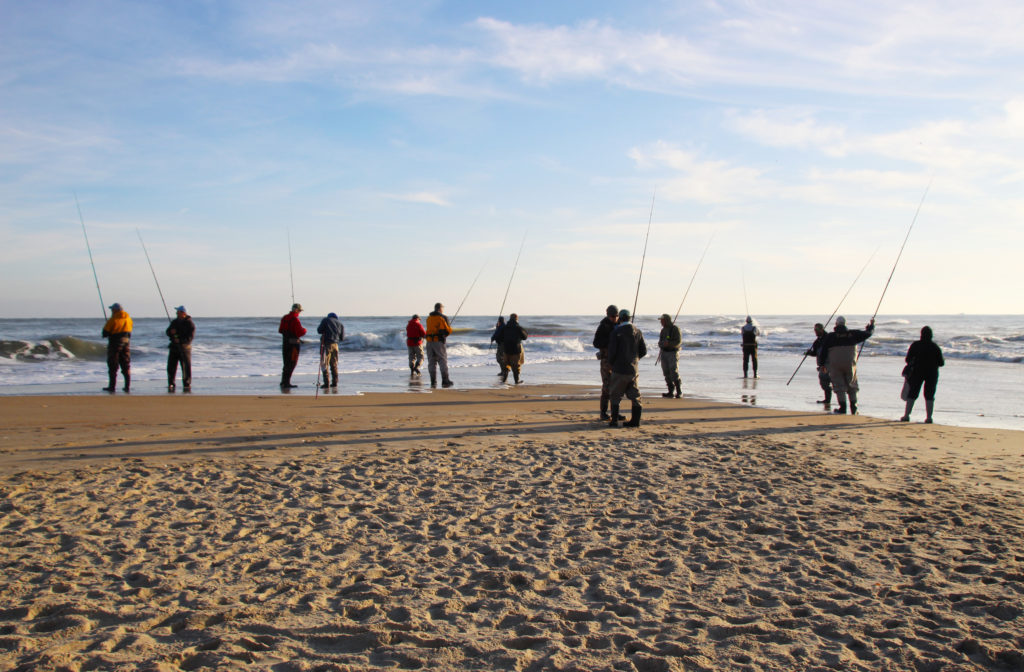
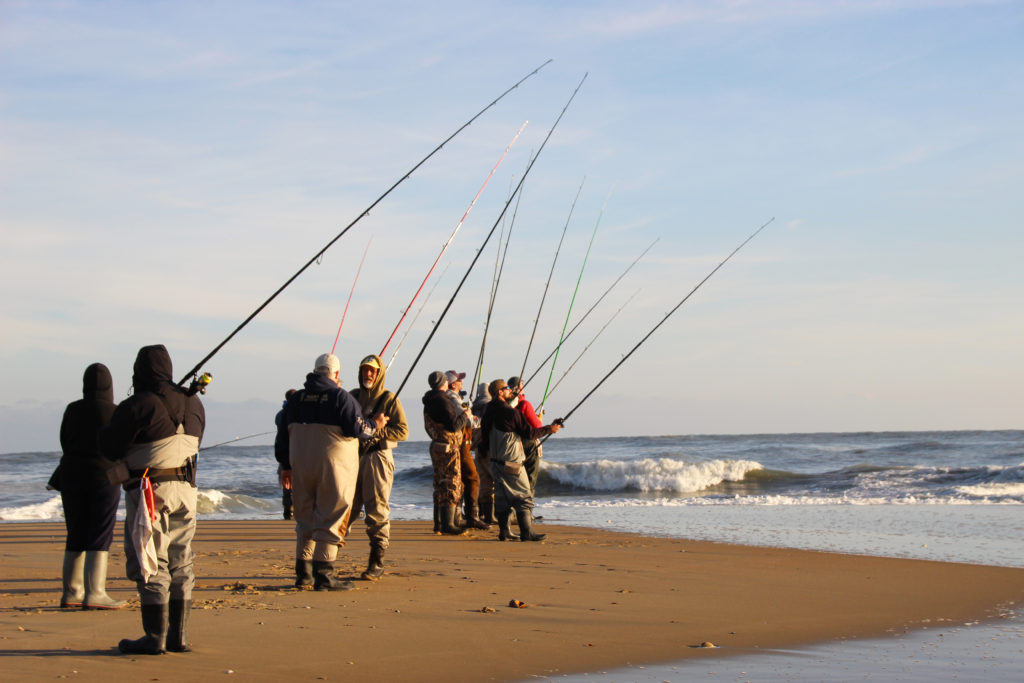
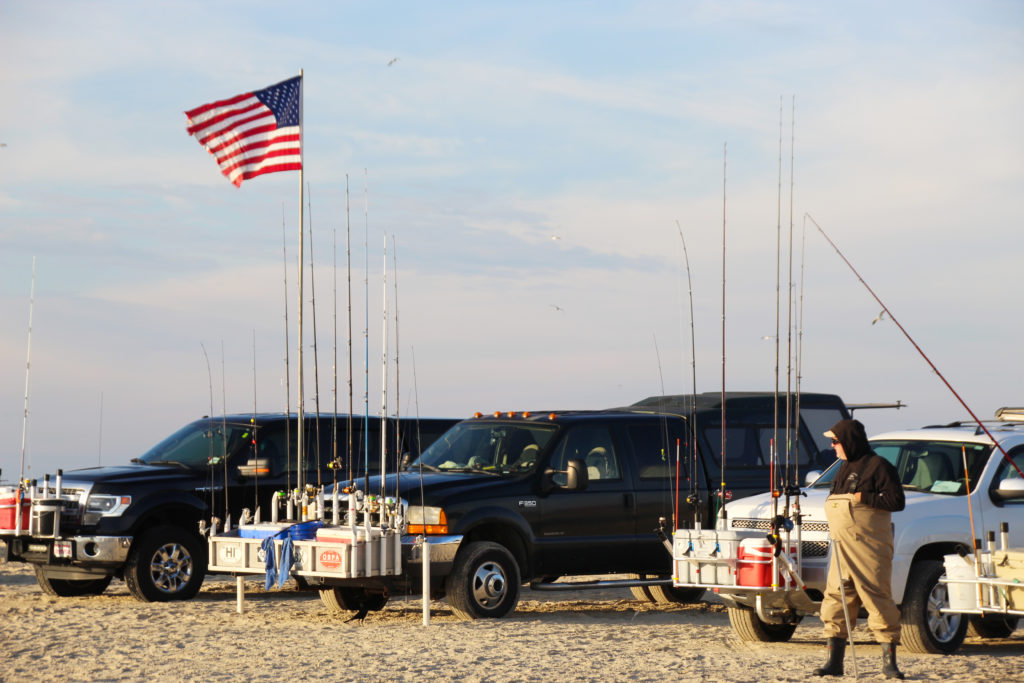
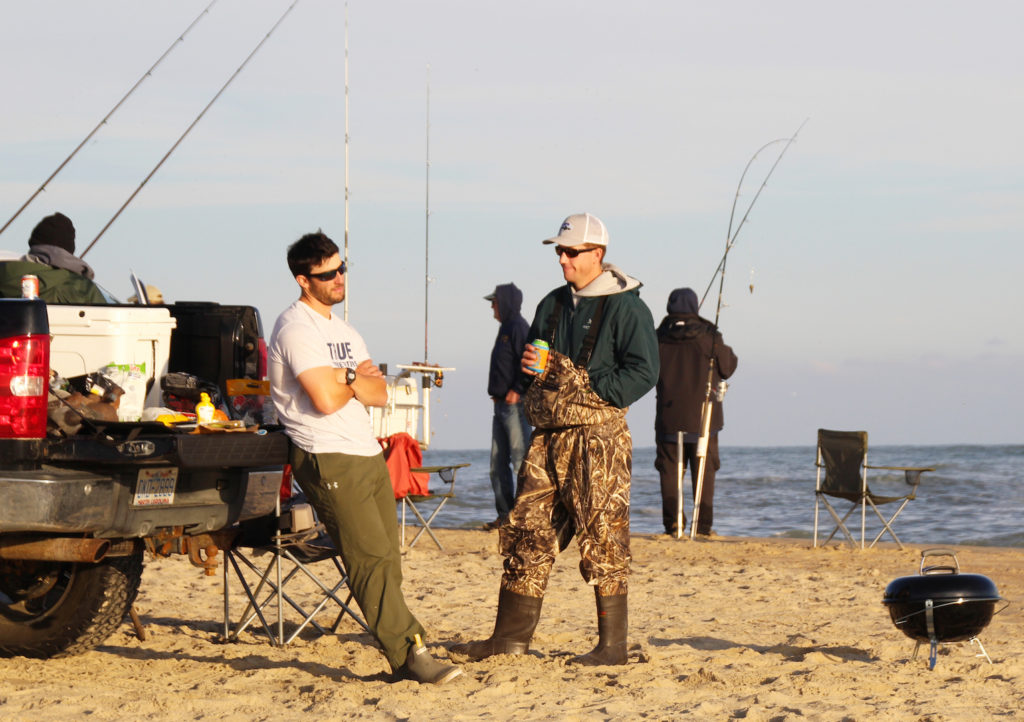
The seafood on the Outer Banks is spectacular. Brian took us to all his favourite places and not one dish let us down.
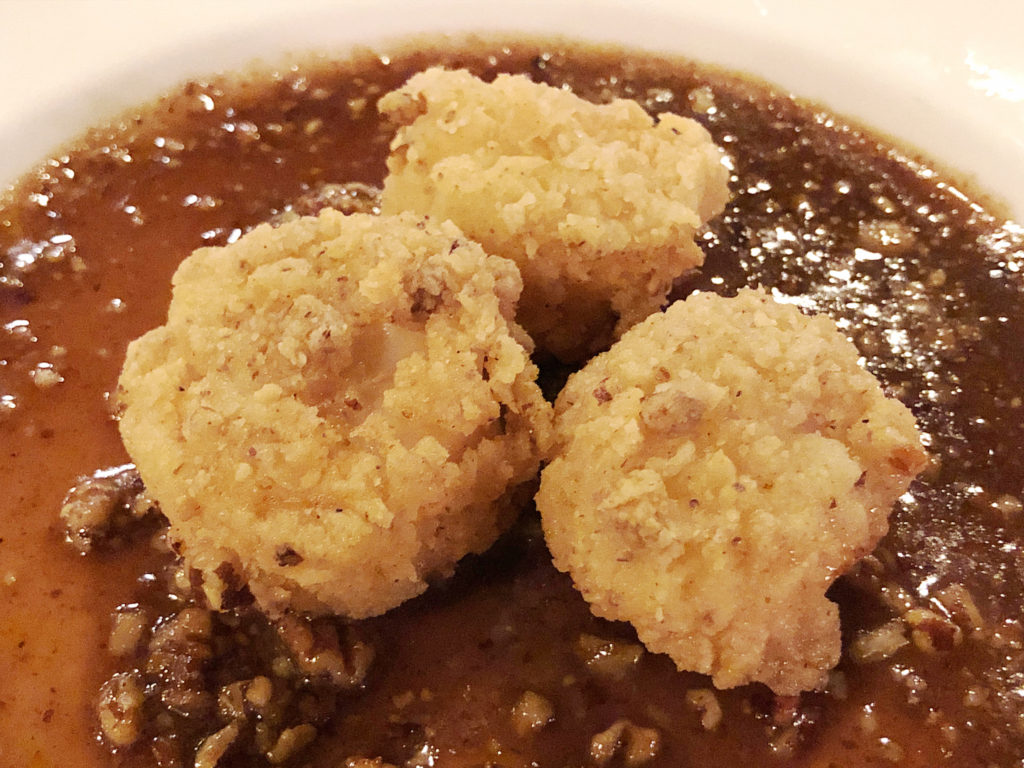
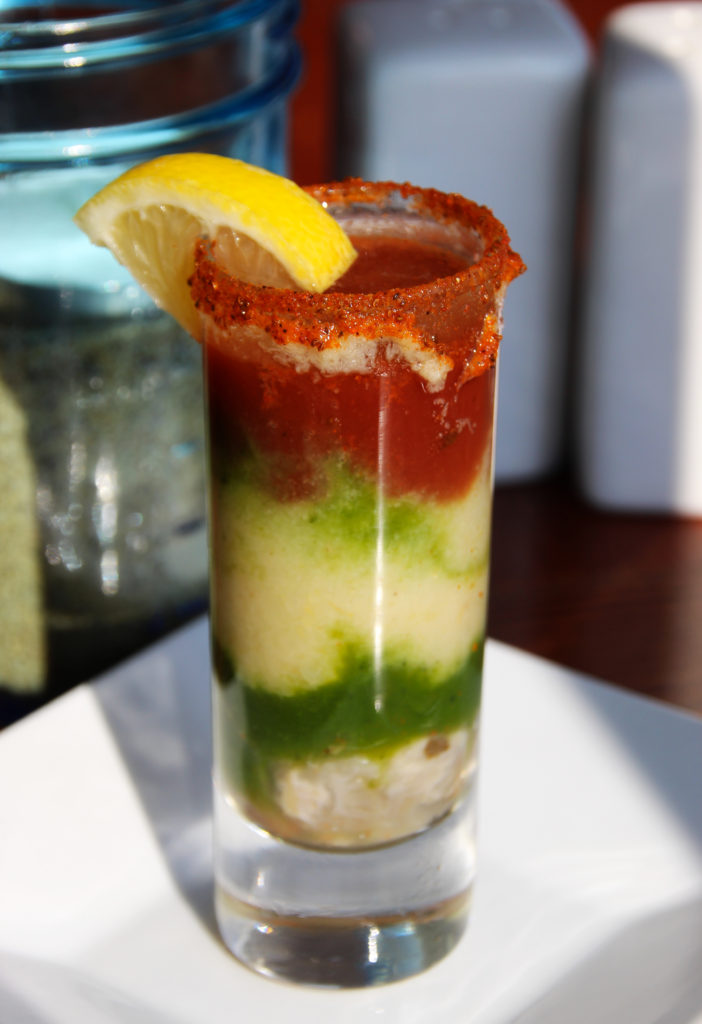
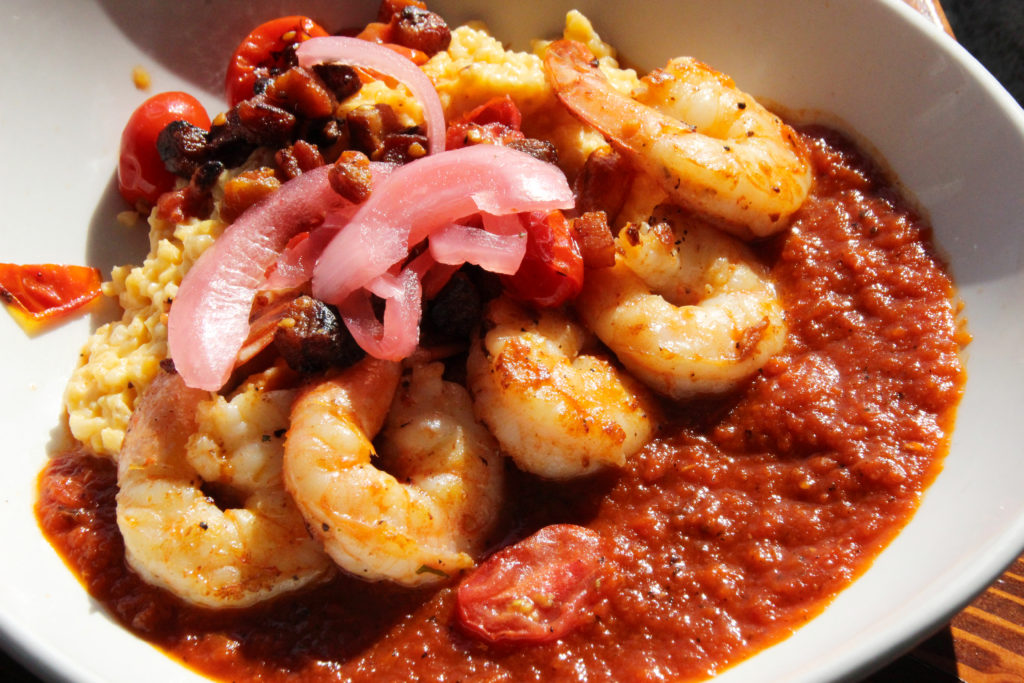
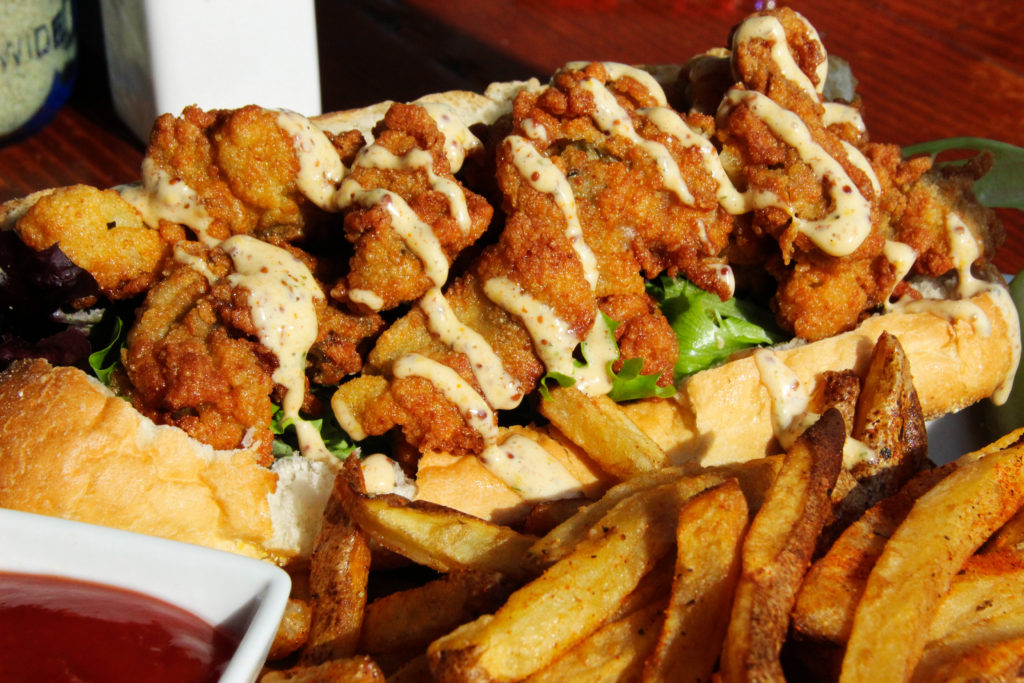
And to top off our Outer Banks visit, the sunrises and sunsets were beautiful.
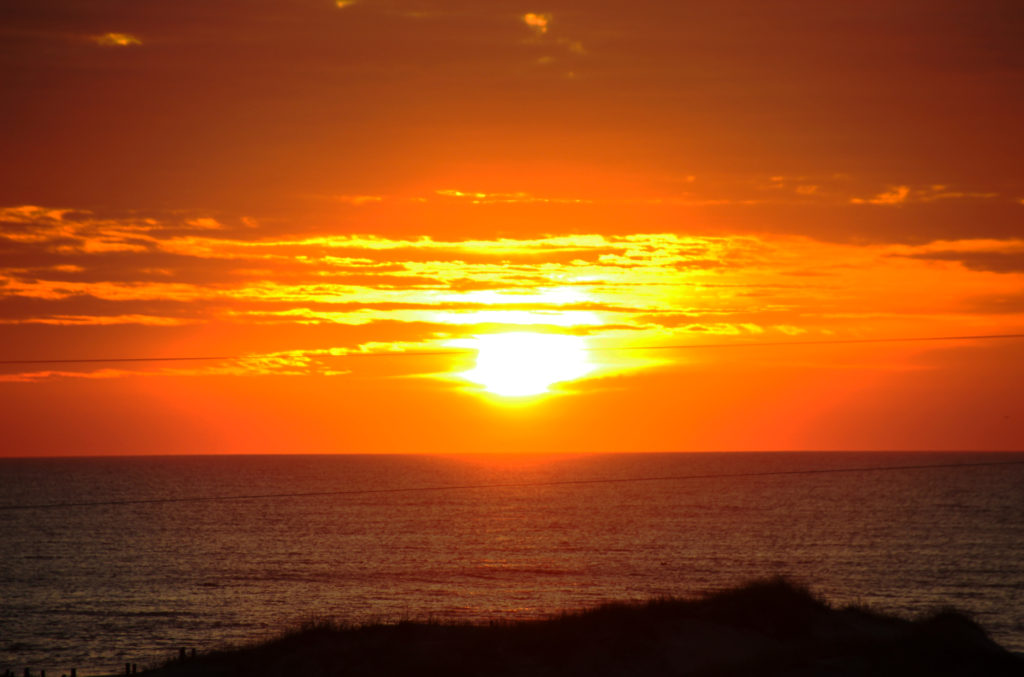
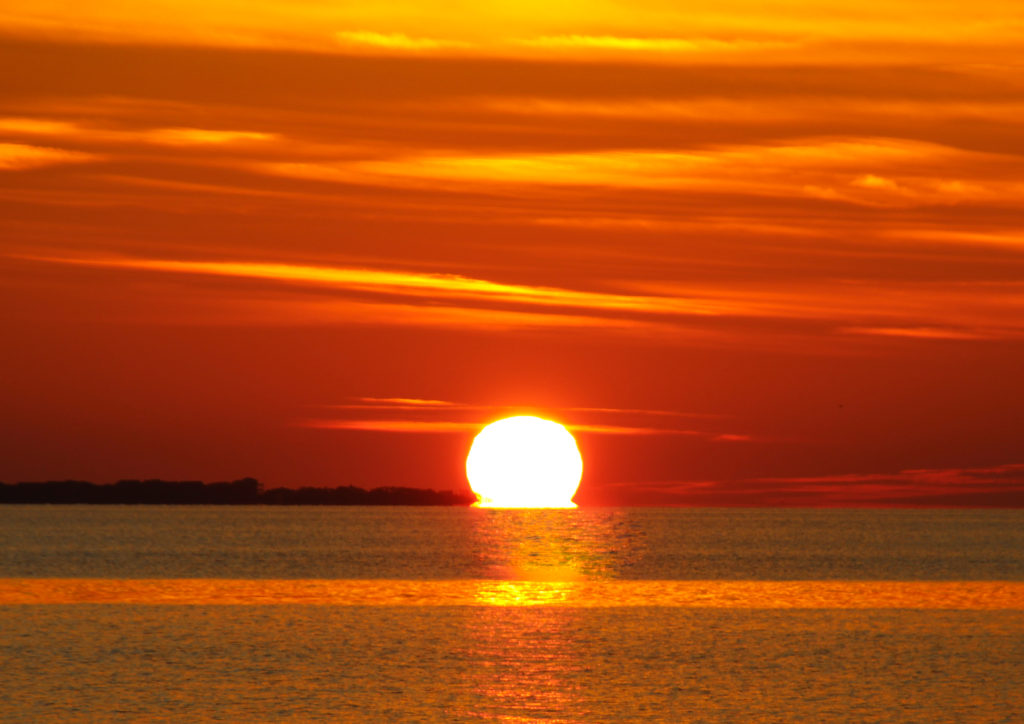
We want to say a huge thank you to John and Debbie for sharing your house and your corner of Outer Banks heaven with us. And thank you Brian – this chapter would not have been the same without you.
S&P
